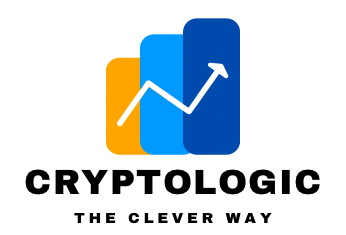Introduction to Ethereum: Unraveling the Power of Blockchain Technology
- Written by Cryptologic

Welcome to the world of Ethereum, a revolutionary blockchain technology that has been redefining the way we envision decentralised systems. In this article, we'll embark on a journey to unravel the power and potential of Ethereum and how it is transforming the financial industry. From the inception of Ethereum to its current standing and future prospects, we'll cover everything you need to know about this game-changing platform.
TO LEARN MORE CLICK HERE
Understanding Blockchain Technology
Blockchain technology is the foundation on which Ethereum stands tall. It is essentially a distributed and immutable ledger that records transactions in a secure and transparent manner. Blockchain technology first gained prominence with the advent of Bitcoin, which showcased the potential of a decentralised digital currency. However, Ethereum took this concept a step further.
Ethereum introduced the idea of "smart contracts," which are self-executing agreements with predefined conditions. These smart contracts enable decentralised applications (DApps) to run without any downtime, fraud, control, or interference from a third party. The applications of blockchain technology extend beyond digital currencies, and Ethereum's innovation paved the way for a myriad of possibilities.
Genesis of Ethereum
Ethereum's story began in late 2013 when a young programmer named Vitalik Buterin envisioned a platform that would go beyond the limitations of Bitcoin. In 2014, the Ethereum project was publicly announced, and it gained significant attention from the blockchain community. By mid-2015, the first version of Ethereum, known as Frontier, was released, marking the beginning of a new era.
Vitalik's vision struck a chord with developers and enthusiasts worldwide, leading to a vibrant ecosystem that continues to grow to this day. The Ethereum Foundation played a crucial role in supporting the development and adoption of Ethereum's technology.
Ethereum's Architecture
At its core, Ethereum is a decentralised and distributed platform, meaning it doesn't rely on a single entity for its operation. Instead, it operates on a global network of computers, each running its own copy of the Ethereum blockchain. This architecture ensures transparency, security, and resilience, making it highly robust against any single point of failure.
One of the key pillars of Ethereum's architecture is the concept of smart contracts. These are programmable scripts that automatically execute actions when certain conditions are met. Smart contracts have enabled the creation of DApps that can be used for various purposes, from decentralised finance (DeFi) to digital identity management.
Ethereum vs. Bitcoin
While both Ethereum and Bitcoin are built on blockchain technology, they serve different purposes and have distinct features. Bitcoin primarily acts as a digital currency and a store of value. On the other hand, Ethereum is a platform that facilitates the creation of decentralised applications.
Bitcoin's scripting language is limited, allowing only basic transaction operations. In contrast, Ethereum's robust and Turing-complete programming language allows developers to create complex smart contracts and DApps.
When comparing Ethereum and Bitcoin, it is essential to understand their unique characteristics and use cases. Both are prominent blockchain-based cryptocurrencies, but they serve different purposes in the digital landscape.
Distinguishing features and use cases
Bitcoin, introduced in January 2009 by the pseudonymous Satoshi Nakamoto, was the first-ever cryptocurrency. It operates as a decentralised digital currency and store of value, enabling peer-to-peer transactions without the need for a central authority like a government or corporation. Bitcoin's main aim is to be a reliable medium of exchange and a store of value.
On the other hand, Ethereum, launched in July 2015 by Vitalik Buterin, is a more versatile platform. It not only acts as a digital currency (Ether or ETH) but also serves as an open-ended, decentralised software platform. Ethereum is specifically designed to facilitate complex smart contracts and decentralised applications (dApps) without any downtime, fraud, control, or interference from third parties.
The Ethereum Virtual Machine (EVM)
At the heart of Ethereum's functionality is the Ethereum Virtual Machine (EVM). The EVM is a runtime environment that enables the execution of smart contracts. It serves as a decentralised, tamper-proof, and secure computing engine that processes and executes code written in Ethereum's programming language, Solidity. The EVM ensures that smart contracts operate exactly as intended, providing trust and transparency to all participants.
TO LEARN MORE CLICK HERE
Ether (ETH): The Native Cryptocurrency
Ether (ETH) is Ethereum's native cryptocurrency and plays a crucial role in the Ethereum network. It serves various purposes within the ecosystem:
Digital Currency: Ether is traded on cryptocurrency exchanges and can be used as a digital currency for transactions and payments.
Investment: Many people hold Ether as an investment, hoping its value will increase over time.
Transaction Fees: Ether is used to pay for transaction fees on the Ethereum network.
Decentralised Applications: Ether can be used as a utility token within decentralised applications, powering various functions and services.
Applications of Ethereum
Ethereum's versatility has given rise to various applications, revolutionising industries beyond finance.
Decentralised Finance (DeFi): DeFi platforms on Ethereum have transformed traditional financial services, enabling lending, borrowing, yield farming, and decentralised trading without intermediaries.
Non-Fungible Tokens (NFTs): Ethereum's blockchain hosts NFTs, unique digital assets representing ownership of digital or tangible items. NFTs have revolutionised the art, gaming, and collectibles industries.
Ethereum 2.0 and Proof of Stake (PoS)
To address scalability and energy concerns, Ethereum is transitioning to Ethereum 2.0. The upgrade introduces Proof of Stake (PoS) consensus, replacing the energy-intensive Proof of Work (PoW). PoS allows validators to create new blocks and secure the network by staking their ether as collateral, reducing energy consumption and increasing scalability.
Challenges and Scalability
Despite its advancements, Ethereum faces challenges, especially concerning scalability and transaction fees during periods of high demand. However, ongoing developments in Layer 2 solutions and Ethereum Improvement Proposals (EIPs) aim to mitigate these issues.
Ethereum in the Financial Industry
Ethereum's impact on the financial industry has been significant, disrupting traditional banking, payments, and asset tokenisation. DeFi platforms have democratised access to financial services, providing a more inclusive and transparent financial ecosystem.
Regulatory and Security Concerns
As a disruptive technology, Ethereum encounters regulatory challenges in various jurisdictions. Security is also crucial, and users must follow best practices to safeguard their assets and data.
The Future of Ethereum
Looking ahead, Ethereum's future appears promising, with potential advancements and innovations. As a leading platform in the blockchain ecosystem, Ethereum continues to foster decentralised innovation across various industries.
Ethereum's Impact on Society
Beyond technological advancements, Ethereum's impact on society is profound. Its emphasis on decentralisation, empowerment, and financial inclusion can transform how individuals interact with financial systems and digital ownership.
TO LEARN MORE CLICK HERE
Conclusion
Ethereum has come a long way since its launch, offering a versatile platform for smart contracts, dApps, and financial services. As it continues to evolve and address its challenges, Ethereum's role in the decentralised future remains pivotal, empowering individuals and revolutionising industries on a global scale.





